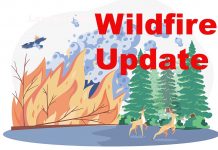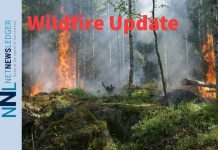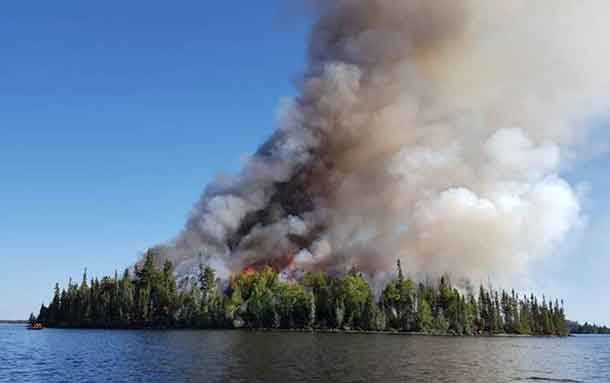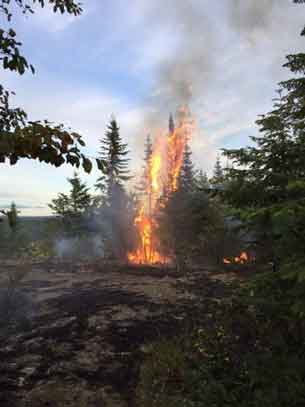
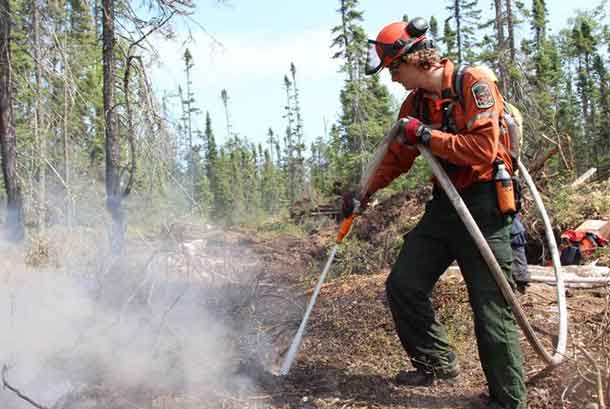
by Deb MacLean
THUNDER BAY – There were five new fires confirmed in the Northwest Region by the afternoon of September 13 and four new fires confirmed on September 12 which required aggressive ground and air attack. They are both human and lightning-caused fires.
The new fires are in the districts of Dryden, Kenora, Nipigon, Sioux Lookout and Thunder Bay.
Smoky conditions have been reported in the western sectors of the region. This is primarily smoke drift from larger fires burning in Manitoba and Saskatchewan. Higher concentration levels can be expected near the Manitoba border and the rest of the region may have hazy conditions. Smoke drift is also possible from fires burning in Idaho and Montana although concentration levels should be light.
There are fires burning in the region that may be contributing somewhat to the smoky conditions, but the widespread haze is from the larger wildland fires in the west.
If people think there is a fire in their immediate vicinity they are advised to call 310-FIRE (3473) to report the fire.
The forest fire hazard is low in the southeast sectors of the region but remains moderate to high in the southwest, central and northern sectors.
To track the fire hazards and to see a complete list of fires across the province click on our interactive map.
Provincial Resources
- Ontario continues to provide support to national and international partners with forest fire management personnel, equipment and aircraft requested through the Canadian Interagency Forest Fire Centre.
- Currently there are 302 personnel out of province supporting firefighting efforts including 266 in British Columbia, 21 in Manitoba, 14 in Alberta (Parks Canada) and one supporting the Canadian Interagency Forest Fire Centre. Additional personnel will be travelling from Ontario to British Columbia today.
- Aircraft resources have also been deployed including one air attack unit to Manitoba and two to the United States. Each unit is comprised of two CL-415 heavy waterbombers and pilots, a Birddog Aircraft and an Air Attack Officer.
Planning to have a campfire?
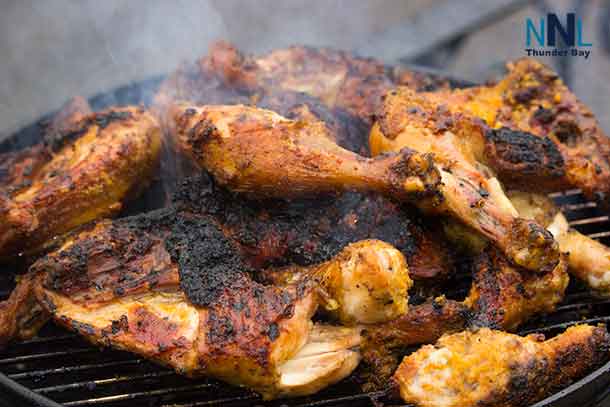
Here are some tips on how to safely enjoy your campfire and avoid the costs and dangers that can arise from an unextinguished or unattended campfire:
- Choose your site carefully. Select a site with easy access to water that is sheltered from high winds. The fire must be built on bare rock or non-combustible material.
- Prepare the site. Clear a one metre space around your campfire site and remove all pine needles, grasses, leaves and twigs.
- Keep your fire small. By law, your campfire cannot exceed one metre in height and one metre in diameter.
- Stay nearby. Never leave your campfire unattended.
- Put your fire out. Soak your fire with water.
- Be sure the fire is extinguished. Stir the ashes with a stick to uncover hot coals and then soak it again!


